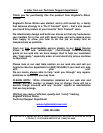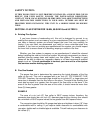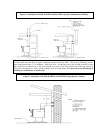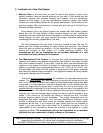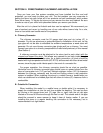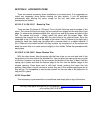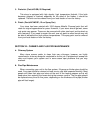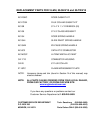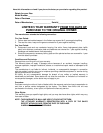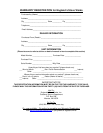
SECTION VIlI: THINGS THAT COULD CAUSE YOUR STOVE TO SMOKE
It is very important that installations are made airtight. This is best accomplished
by using furnace cement at all pipe joints and where the first section of pipe enters
the stove and enters the chimney flue. Any existing air leaks will cause the air to
draw at points where the least resistance is offered — such places are pipe joints,
flue thimble, flue openings in the chimney, ash clean-out doors and cracks in the
chimney.
These areas may cause air to enter your system and not be drawn through
the stove as necessary, which could result in a cool chimney, causing the smoke to
build up in the system and eventually come back into the house. This is called “back
puffing” and can be helped by sealing all troublesome areas so they are airtight.
There are two main causes of chimney down drafts. One is from the air currents
being deflected down the chimney by nearby objects such as trees, a building or a
hill. The other cause is that in many chimneys the flue gases chill too quickly as they
pass up the chimney system. When the flue gas cools too quickly, it becomes heavy
and will back up in the system; this will often result in “back puffing,” poor combustion
and smoke odors in the house. Burning the stove hotter will, in some cases, help this
situation. If you have any problem with “back puffing” or a poor drawing chimney
system, contact your local dealer or call the factory.
SECTION IX: WHAT CAUSES CREOSOTE?
Creosote is caused by the condensation of the vapor that exists in the escaping
smoke; the moisture level of your fuel will determine the density of this vapor. A
severe downdraft as discussed previously will also cause creosote. Moisture will
form at the coolest point in your chimney system and at this point will tend to build
creosote. The ash is picked up by the moisture in the system and will build up or run
back down the inside of your flue.
This situation can sometimes be helped by installing an “open vented” type
chimney cap, which will allow the chimney to maintain more heat to create a better
draw and keep some wind currents from entering the system. This type cap will not
correct a poorly constructed chimney or one in need of repair. Such chimneys may
have to be relined or rebuilt.



